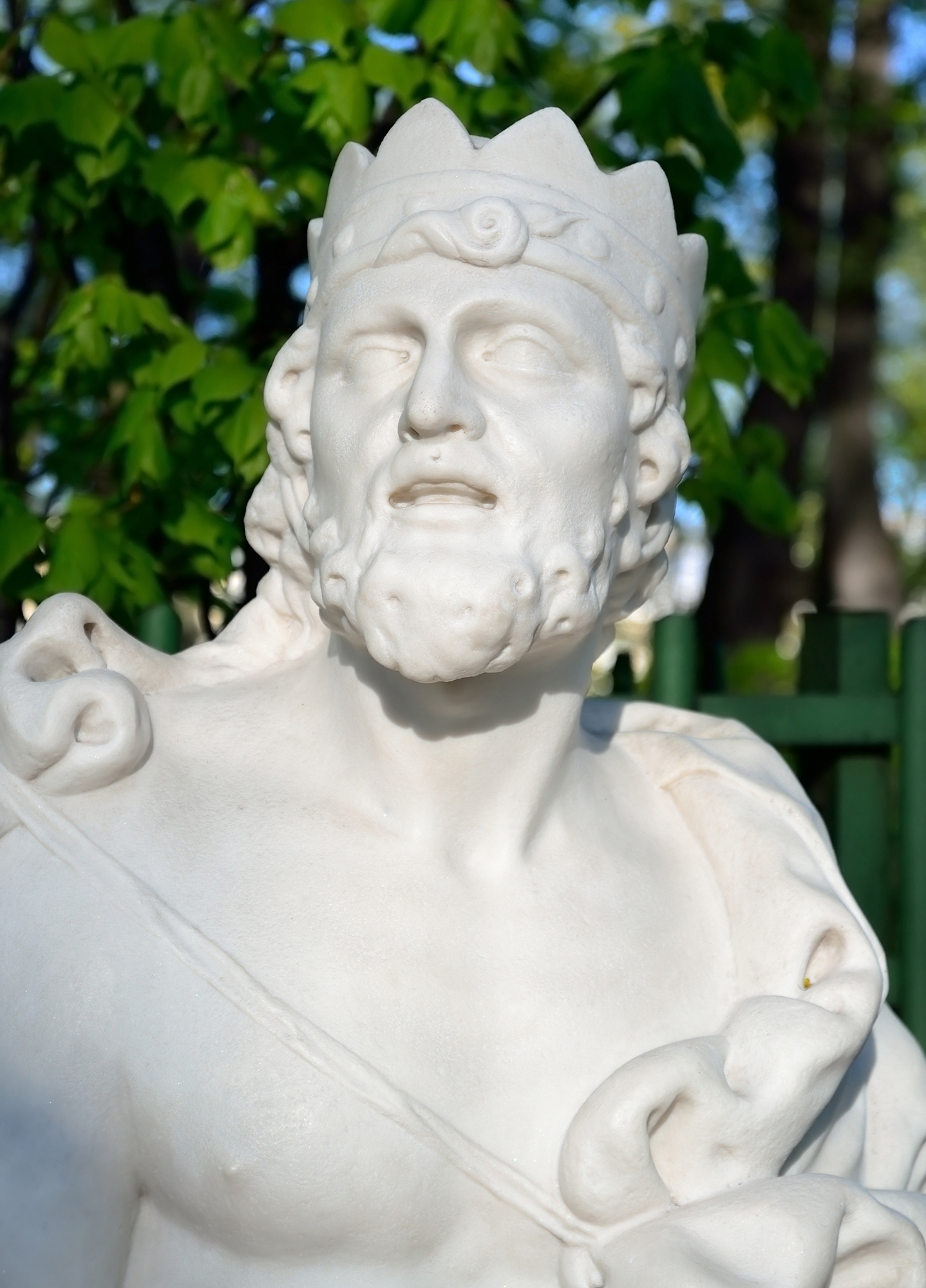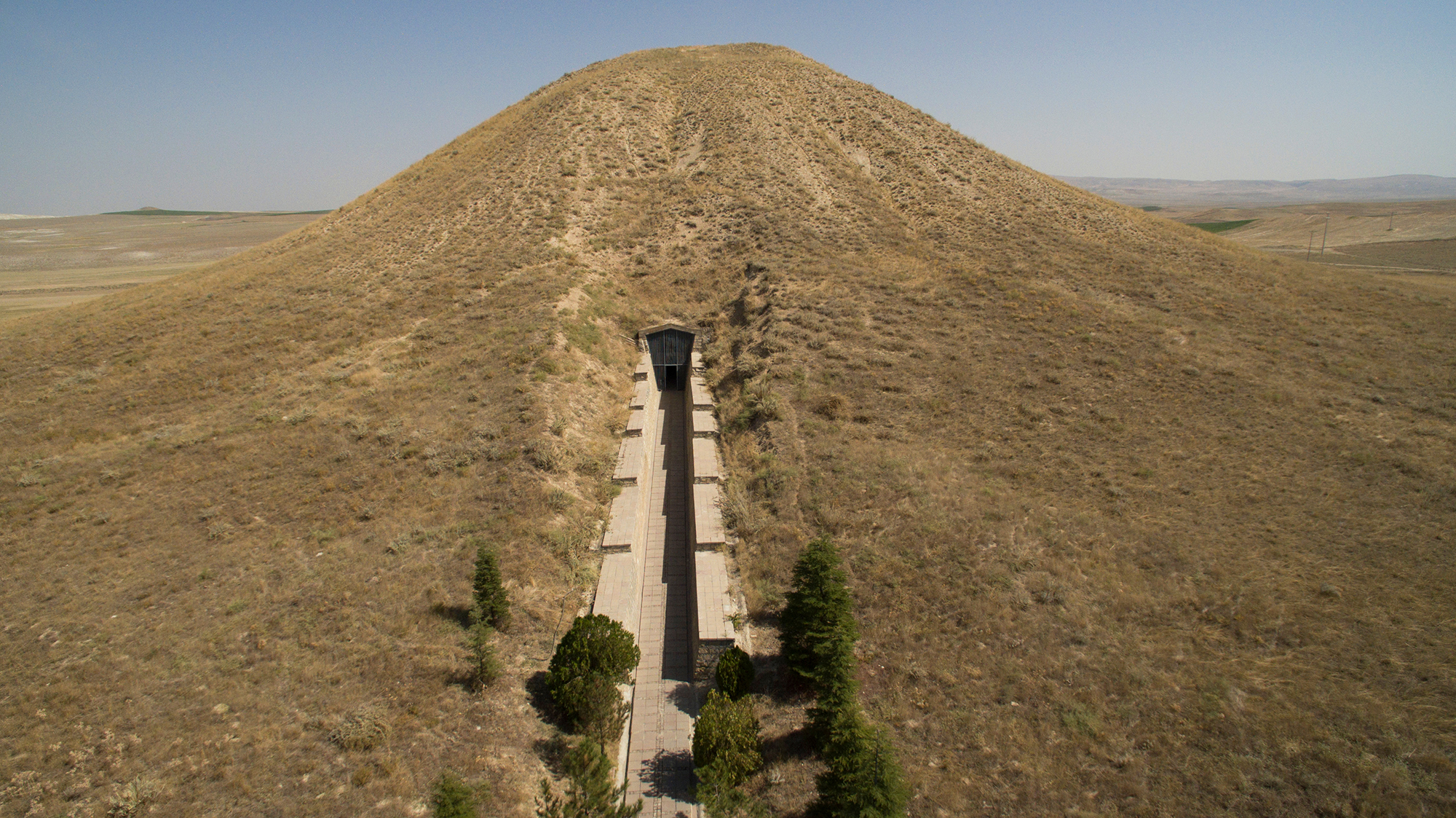Phrygia << FRIHJ ee uh >> was an ancient region between the Mediterranean Sea and the Black Sea , in what is now central Turkey . The Phrygians were an Indo-European people who came from southeastern Europe after about 1200 B.C. and settled in lands once ruled by the Hittites . During the Iron Age , from about 1100 to 700 B.C., Phrygia developed into a kingdom that eventually reached from the Troad (Biga Peninsula) in the northwest to the Euphrates River in the east. The Troad is a peninsula in northwestern Asia Minor that juts into the Aegean Sea . Phrygia’s capital was at Gordion, about 40 miles (65 kilometers) southwest of Ankara and next to the Sakarya River.
Most of the ancient writers who described the kingdom focused on King Midas , who ruled during the second half of the 700’s B.C. The stories of his deeds fall into the category of legend, and most were written centuries after his death. They describe a man who turned all he touched into gold, a power given to him by the god Dionysus . 
More valuable information about Midas’s reign comes from the records of the Assyrian kings, which refer to Midas as Mita. These records say Midas was named ruler of the Mushki people. The records do not include the term Phrygian. Midas took the throne around 740 B.C. and probably ruled for more than 40 years. During that time, Phrygia reached its largest size and was regarded as one of the most powerful kingdoms in Asia Minor. During the same period, the Greek epic poem the Iliad was written down for the first time, and it described Phrygia as a strong, well-fortified kingdom.
Phrygia came under the control of the kingdom of Lydia in about 600 B.C. Along with the rest of Asia Minor, it was conquered by the Persians about 540 B.C. The Macedonian ruler Alexander the Great arrived in Phrygia in 333 B.C. There, according to legend, he cut the Gordian knot . A prophecy foretold that whoever could untie the knot would rule Asia. After Alexander, the Seleucids ruled Phrygia. By the mid-200’s B.C., Phrygia was occupied by the Galatians , members of Celtic tribes who had traveled as mercenaries (hired soldiers) from central Europe to Asia Minor. The Romans began taking control of the region in the 100’s B.C. and ruled it for the next 500 years.
The Phrygians were known for their carpentry, ceramics, textiles, and tomb-building skills. The region was covered by monumental burial mounds that held wooden tomb chambers. The largest of these apparently was intended for Midas’s father, Gordias. The Phrygians’ principal god was called Matar (Mother). The ancient Greeks and Romans also worshipped her as Kybele, Cybele, or the Great Mother of the gods. 
In ancient times, the Phrygians usually were identified by a soft, cone-shaped cap with the top pulled forward. This headgear, called the Phrygian cap, gradually became an identifying feature of any group of ancient peoples from the Near East and central Asia.
